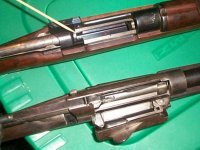Welcome to TFL!
The terms used in ammunition descriptions are a blend of the specific and the general. And of US and European practices. Some cartridge names are very precise. Others bear only a general relationship to the actual dimensions of the round.
Some rounds have been in use well over 100 years, and their names reflect the customs of an earlier era. Others reflect the inventor's or manufacturer's idea of what would sell well. Still others are military designations, determined by governments.
It is a large, and interesting field and many good books have been written about cartridges and their names, and how they came to be what they are today.
But it can be very confusing until you learn the specifics of the rounds you are talking about, and the different terms for different features of their construction.
For instance...
How can a 5.56x45 round have different grain weights?
The grain weight is the weight of the bullet in grains (Averdupois scale). In this scale, there are 7000 grains (gr) to the pound (lb).
Cartridges are loaded with slightly different weights of bullet, for different purposes or reasons. Heavier bullets do some things better than lighter bullets. Light bullets do some things better than heavier ones.
What does the 5.56x45 stand for?
5.56 stands for the bore size, in millimeters (mm), and 45 is the length of the brass case in mm. This is the common European system of designation. When read aloud it is said "5.56 by 45" mm
Most cartridges have at least two names, and some even more. Our Military calls the round the 5.56mm (aka 5.56x45 and 5.56mm NATO) In the US the round is also called the .223 Remington.
Be aware that the actual bullet diameter used in a given round may not be exactly the same as the dimension indicated in the name. It is usually close though. Some cartridges are named based on the diameter of the bore, others on the diameter of the groove to groove distance. For example;
A .30 caliber rifle is one that has a bore diameter of .300. But the groove diameter is commonly .308, or even .311-.312.
A .308 Winchester and a .30-06 both have bores of .300, and grooves of .308". The fire the same bullet (which is .308 dia) but their cases are different lengths. These two rounds in the European system are 7.62x51mm (.308Win) and 7.62x63mm (.30-06).
Confused yet?
It gets even worse when you talk pistol rounds!
also, FYI 7.62mm is .300", NOT .308" And the Russian rounds called 7.62 actually use a .311 or .312 bullet!

And so does the .303 British and the 7.7mm Japanese!

I know this seems kind of crazy, but once you do a bit of research you will see that there is actually a method to the madness. Mostly. sometimes....
Ask any specific question you want, we'll answer it the best we can.

